› Forums › 2025 Winter Courses › Sun-GCSEEnglish
- This topic has 23 replies, 6 voices, and was last updated April 21, 2025 by
Beth.
-
AuthorPosts
-
-
at 11:26 #45270
Beth
ParticipantSummary for Lesson 1
In today’s class we began our work on GCSE English prep, thinking about the foundational skills the students should keep in mind whilst preparing for their exams. We opened with some metaphor work, thinking about how it can improve our writing and analytical thinking, before learning about how to analyse on a word-by-word basis. We thought about the building blocks of argument in GCSE analysis and how to delve as deeply as possible into the text. We then put these ideas into practice through some unseen poetry analysis and finally had a brief discussion on essay planning. Well done for all your hard work today class, it was great to see you all and hear your brilliant ideas. Keep up the fantastic job! 🙂
What is analysis vid: https://www.youtube.com/watch?v=5Zy678wqDos&t=41s
Homework
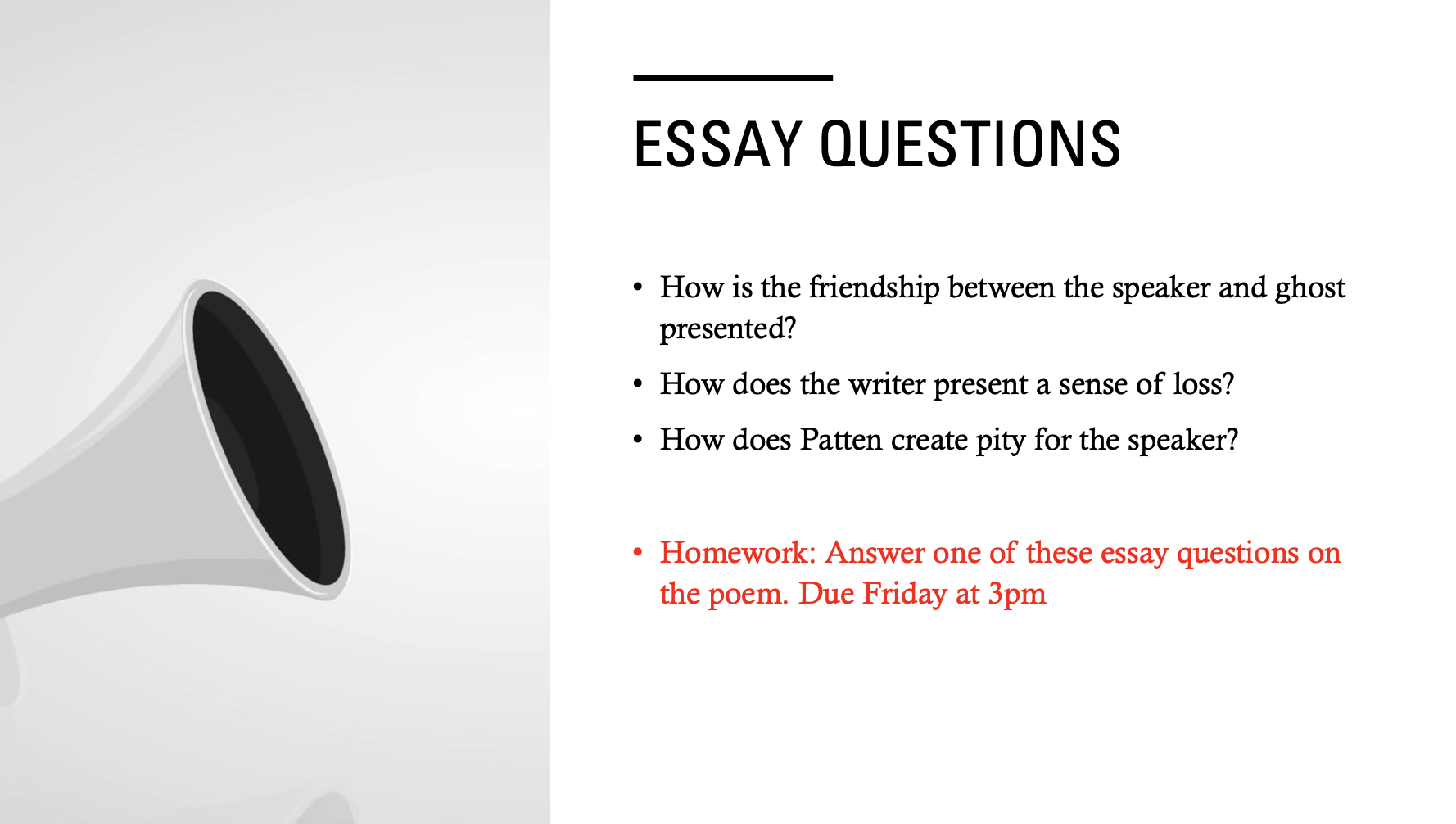
Attachments:
You must be logged in to view attached files. -
at 17:12 #45294
zaara
ParticipantOne effective method Patten uses to present loss is through the use of language throughout the poem. Patten presents loss in “whiskey on the table” which could imply several things such as the fact that the man using alcohol may represent a sign of his grief and how he has to use alcohol to get over the loss of his friend. However, this could show that since the man is drunk, the ghost of his best friend may be a figment of his drunken imagination – a hallucination. Additionally, in the phrase “I raise a glass to him- 2 months dead now”, loss is presented by the use of juxtaposition, where traditionally you raise a glass in celebration, but it is then contrasted with the statement ‘2 months dead now’ which is a reason for mourning, not celebration. “I raise a glass to him” is a key representation since you often raise glasses with companions however his companion is dead so this therefore highlights the theme of loss.
-
at 17:22 #45352
-
-
at 22:19 #45320
 zixuanParticipant
zixuanParticipantTo Beth
This is my homework and I did the second question and spent about 40 minutes on it. Really enjoyed the lesson!
Zi Xuan
Attachments:
You must be logged in to view attached files.-
at 17:23 #45354
-
-
at 17:32 #45356
Beth
ParticipantSummary for Lesson 2
In today’s class we focused on unseen poetry analysis, learning about different techniques to approach a poem and thinking through our own analyses. We began with thinking about poetic structure and how to interpret techniques such as enjambment, punctuation and line breaks, before looking at a GCSE booklet on the topic that covered a step-by-step approach to unseen analysis. We then broke this down using some poems from the booklet, thinking about language, structure and theme, and finally learned about some specific high-level poetic techniques such as synecdoche and high modality. Excellent ideas today everyone, particularly with your metaphor work and ideas on the poem from the booklet. Keep up the great work and see you next week 🙂
GCSE booklet: https://www.aylshamhigh.com/_site/data/files/users/9/files/2D3F1965CD6E5B839289215244EC4BF3.pdf
Structure video: https://www.youtube.com/watch?v=bDzZOTH29vk&t=1s
Homework
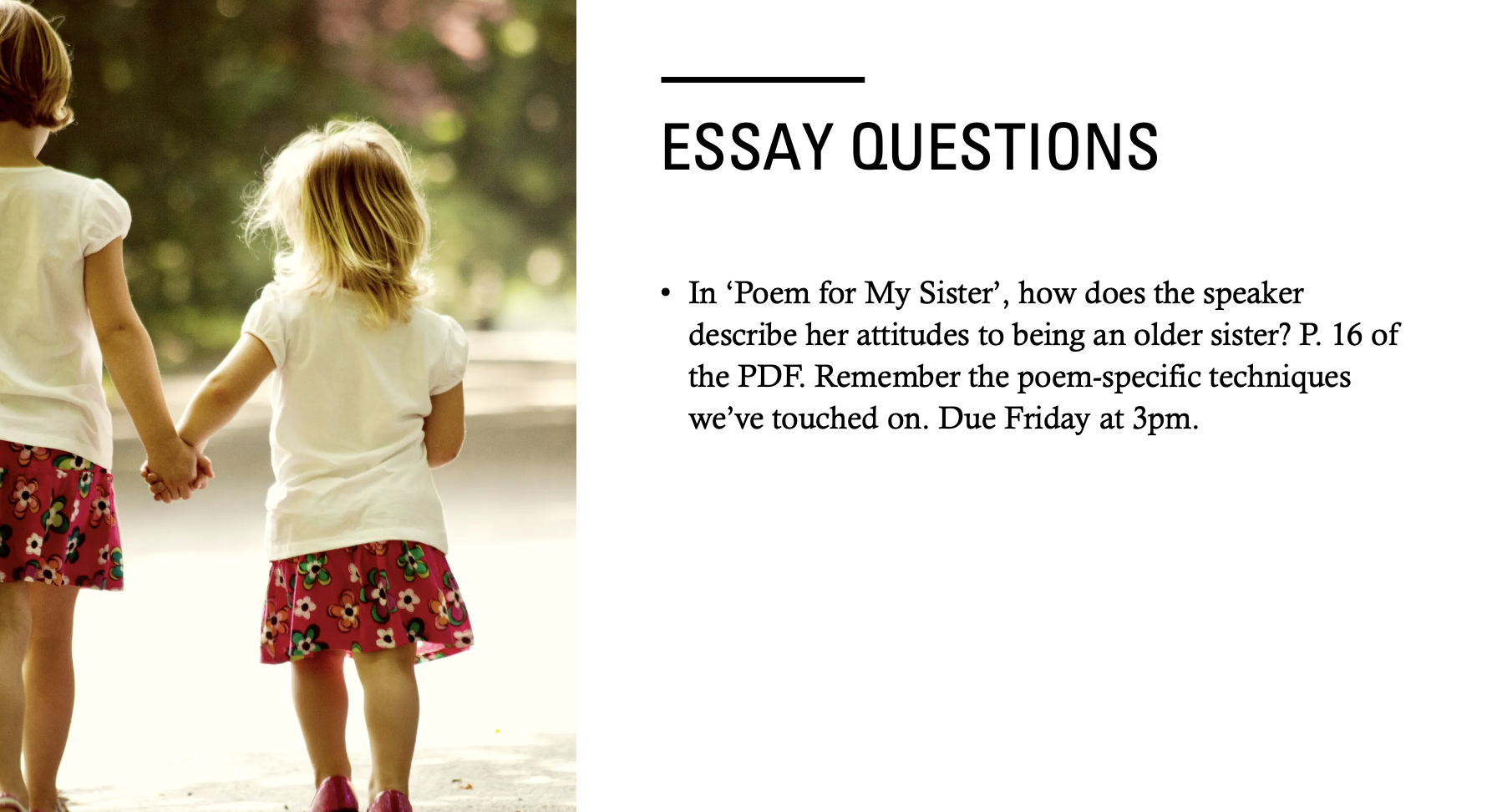
Attachments:
You must be logged in to view attached files. -
at 23:01 #45399
zaara
ParticipantIn the poem, ‘poem for my sister’, the narrator speaks in the older sister’s perspective as she watches her younger sister try on her high heeled shoes. The immediate of the possessive pronoun ‘my’ shows how the older sister automatically takes responsibility over her and feels the need to look after her and protect her. Between the older and younger sister there is a sense of longing where the older sister wishes for her younger sister to never grow up and never have to experience the horrors of the real world compared to the world the little sister knows. Furthermore, the speaker continues to reinforce the possessive nature she has over her sister by stating, “I should not like to see her in my shoes” showing how the older sister feels the need to protect the younger sister no matter what.
-
at 13:57 #45437
-
-
at 20:28 #45421
 zixuanParticipant
zixuanParticipantHi Beth
This is my homework for this week!
Zi Xuan
Attachments:
You must be logged in to view attached files.-
at 14:01 #45439
-
-
at 20:36 #45423
 SophieParticipant
SophieParticipantIn the poem, ‘Poem for my sister,’ the speaker shows her protectiveness over her sister by using an extended metaphor of shoes, which is used to symbolise the journey of growing up. The younger sister is shown trying on the speakers ‘high heels, believing that ‘they fit her perfectly,’, symbolising that she is eager to get older and more mature. ‘But wobbles’, which suggests how she is not ready to experience hardships that come with being an adult. The high heels become a metaphor to show how maturing might seem exciting but comes with difficulties which the younger sister is too naive to understand. Also, the younger sister is described as ‘sure footed’ when playing hopscotch, suggesting confidence in her childhood times. However, the speaker warns her about “unsuitable shoes,” pointing to her own “distorted feet” and “calluses” as signs of hardship. This physical imagery suggests how the older sister has suffered scars of experience, strengthening her desire to guide her younger sister away from struggles of adulthood.
-
at 10:37 #45426
Yanting
ParticipantHi Beth,
This is my homework.
Thanks,
Yanting
Attachments:
You must be logged in to view attached files.-
at 14:06 #45441
-
-
at 14:03 #45428
 SophieParticipant
SophieParticipantHi Beth:
This is Sophie’s homework.
thanks!Attachments:
You must be logged in to view attached files.-
at 14:10 #45443
-
-
at 18:48 #45432
Caroline
ParticipantHi Beth,
This is Caroline’s homework.
Thanks!
Attachments:
You must be logged in to view attached files.-
at 14:18 #45445
-
-
at 11:22 #45435
Beth
ParticipantSummary for Lesson 3
In today’s class we focused on modern texts, thinking about what defines a modern text particularly in the context of the GCSE. We used a GCSE set text as a case study, thinking about theme and how to utilise it in essays, and discussed the importance of covering context (both literary and historical). We read some key tips on this section of the exam and thought about high level introductions, with the class practicing using them beautifully. Very well done everyone, really strong work this morning. Keep it up and I’ll see you all soon 🙂
Homework
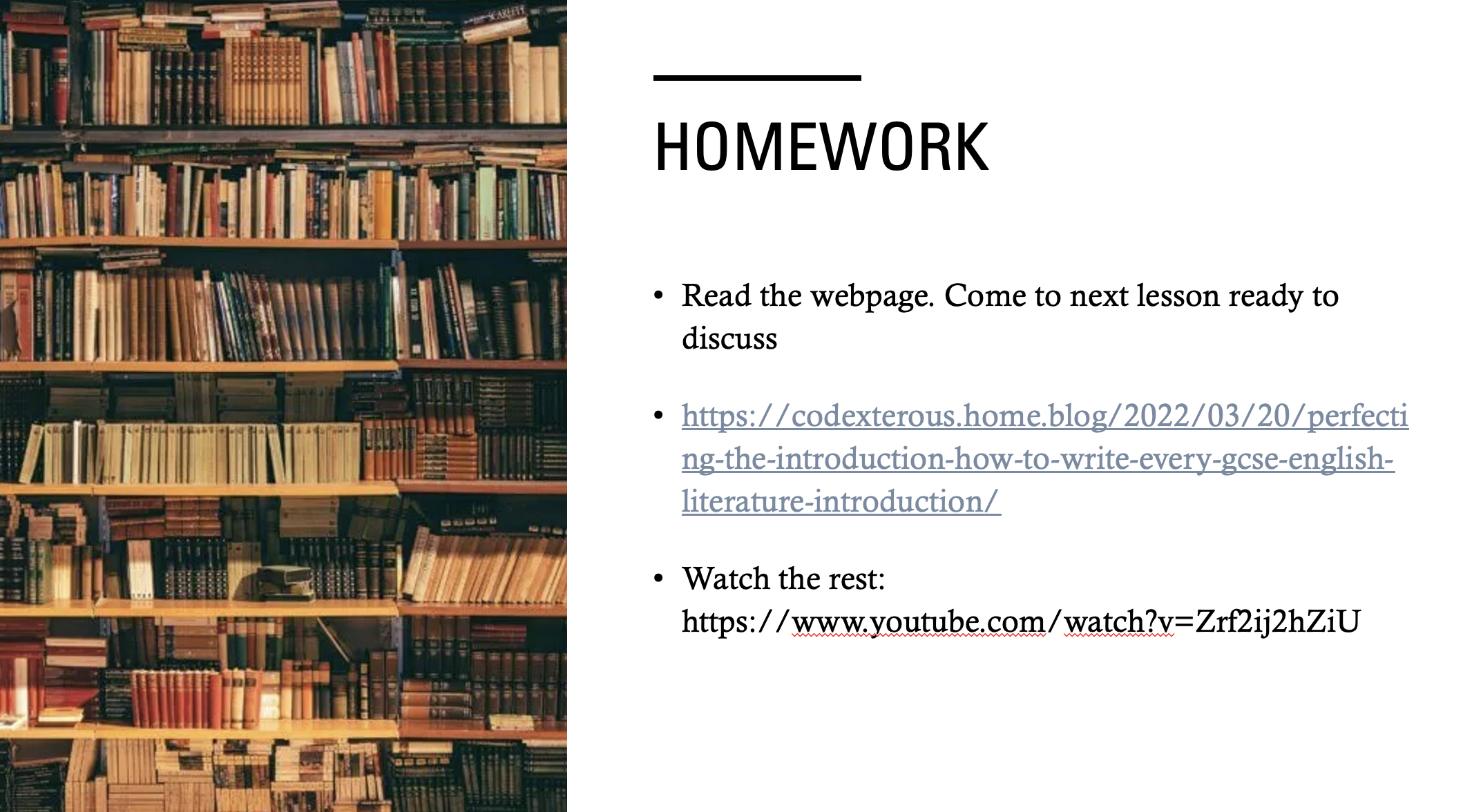
Attachments:
You must be logged in to view attached files. -
at 13:11 #45561
Beth
ParticipantSummary for Lesson 4
In today’s class we thought about analysing Victorian literature in the GCSE exam, speaking about it in terms of both set texts and unseen. We thought about the Victorian obsession with the gothic, science vs. religion and the duality of man and picked apart the ways in which these themes can aid us in understanding passages from Victorian novels. We spoke about the birth of the novel and its historical context and finally applied this to a passage from a GCSE exam. The class wrote some excellent responses analysing this piece, thinking about the metaphor usage and literary techniques throughout. Really great work everyone, very impressive and I’ll see you tomorrow 🙂
Homework
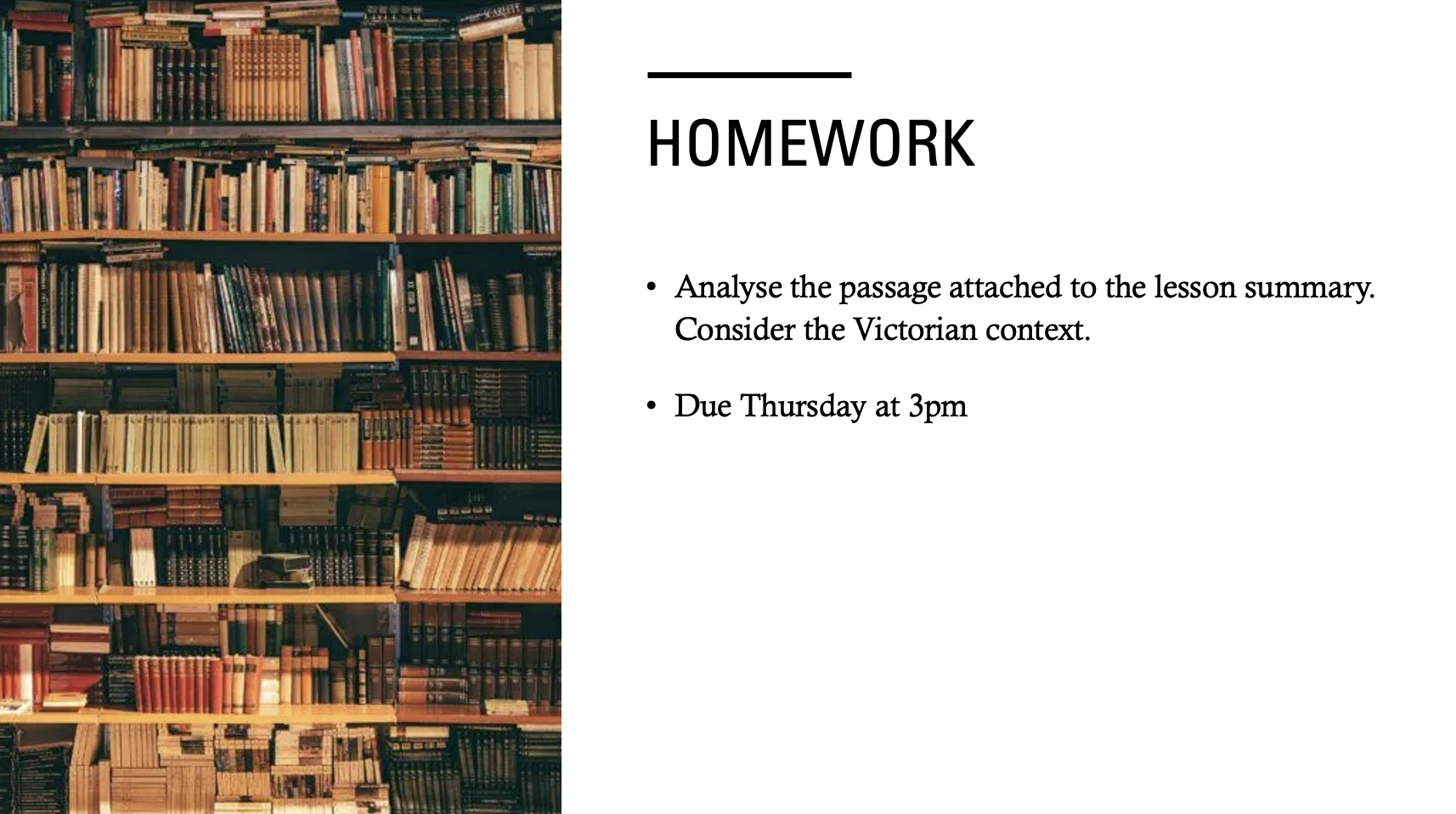
Attachments:
You must be logged in to view attached files. -
at 15:51 #45564
Caroline
ParticipantHi Beth
-
at 15:54 #45565
-
at 22:08 #45575
Beth
ParticipantSummary for Lesson 5
In today’s class we thought about character, theme and context and how to weave these into GCSE style responses. We looked different ways in which we can plan for character analysis, thinking through planning out theme and quotations linked to key characters, and thought about how to structure a GCSE response using theme. We worked on an extract from a past paper and the class shared some ideas in pairs before finally doing work on context and how to include it. They shared in pairs, teaching their partner about the context of a set text of their choice, and finally touched upon the ways in which we should connect theme to what the author is trying to say. Fab work everyone, well done for all your writing and great ideas. Keep up the super work and see you next week 🙂
Homework
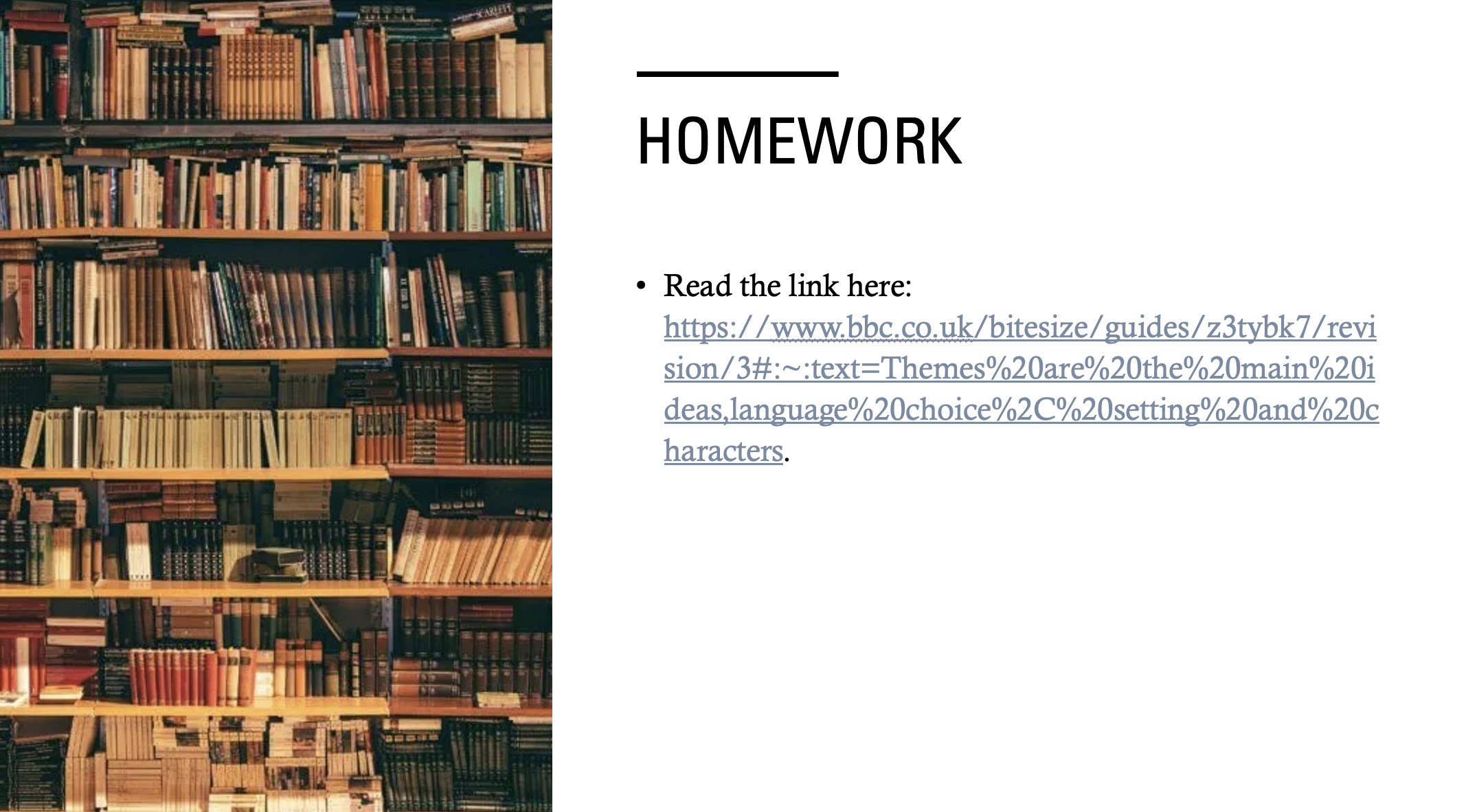
Attachments:
You must be logged in to view attached files. -
at 16:31 #45637
Beth
ParticipantSummary for Lesson 6
In today’s class we looked at Shakespearean analysis in the GCSE, working on language, form and structure. We thought through new ways of unpacking language that may initially seem daunting, follow a step-by-step process to help students decode 15th-century language. We worked on elements such as tragedy and its core components and learnt advanced techniques such as anagnorisis. Finally we looked at context and history, linking all our work together with historical research. Well done everyone for your fantastic work, very impressive & keep it up 🙂
Homework

Attachments:
You must be logged in to view attached files.
-
-
AuthorPosts
- You must be logged in to reply to this topic.
